Choosing a place to participate in this sacred experience is an extremely important factor in determining what you will get out of the experience.
Wherever you are considering, our first recommendation is to check in with yourself and see if it feels right for you first, and then make sure you have a clear understanding of the experience of the healers and the strength and safety of the container that will be held for you, both during and after the retreat.
In this work, there are many things to consider – who trained the person who will be running ceremonies, the lineage of their maestro(s), what the experience of their direct teacher was, how long they were an apprentice, where they have trained, what tradition (if any), and how long they have been holding ceremony. This will help give a clearer picture about how they are able to hold and safeguard the energetic container of the space. If they have trained in the Shipibo or mestizo tradition, the number of master plant dietas they have undergone can be a very useful gauge here. Plant dietas are part of the apprenticeship path, wherein the apprentice “diets” with different master plants, each of which can last anywhere from 10 days to over one year, in isolation, following a very strict diet, drinking small amounts of a tea brewed with the master plant, and connecting with it through ayahuasca ceremony. Over time, as their bodies and spirits are cleaned through this process, they will be able to pick up the subtle energies of the plant they are working with. This is how the maestros obtain their icaros, or healing songs – they are channeling the different master plants they have connected with during their diets, and as a result of this connection, the plant works through them and on their patient in the form of the icaros. This is a general overview of this important aspect of training to be a healer and holding ceremony in these traditions. A healer who can hold ceremonies on their own will typically have completed at least 5 years of diets.
You can read more about the healers we work with at Soltara here.
Additional factors to consider are the ratio between healers and group sizes, particularly dependent on the experience of the healers (a very good healer can hold around 10 – 12 people on their own, but beyond that it’s very common to have more than one healer working together to manage the energies), as well as the brew itself – where it comes from, and if there are any admixtures to the brew besides ayahuasca vine and chacruna leaf. If so, it would be very important to know what they are, and why they have been added. Admixtures such as strong trees (chiric sanango, ayahuama) or plants (toé) can be dangerous if not properly dieted by the person who is drinking the brew.
At Soltara, we work with a team of 2 healers (always female and male, within the same lineage), and 2 – 3 facilitators, for a maximum capacity of 21 guests. Our ayahuasca consists of only the 2 main ingredients, ayahuasca vine and chacruna leaf.
Additionally, there are many retreats that also combine other medicines and traditions within a short period of time. This is to be approached with caution, if done at all. We at Soltara feel that it is important to make the space to work with different medicines on their own, both from the perspective of your own body’s system and its ability to work with the energy of that medicine, as well as out of respect to the medicine itself as its own master plant teacher. It is one of the reasons that we recommend refraining from any other psychoactive substances for at least 30 days before and after your retreat.
Finally, it is important to get an idea of what type of follow-up or integration support they offer, both during the retreat (in between/after ceremonies) and after you go home. Are there any experienced integration therapists or coaches on call? Do they offer any resources or ways to stay connected to the group, community, and experience? Do they prepare you for your integration with workshops, sharing circles, or information about what can come up and the different tools available to you should you need them? For some context, you can read more about Soltara’s integration program here.
We hope this helps offer some guidelines for you to make the decision that feels right for you. If you have further questions about the way we work with medicine at Soltara, please reach out to us through our Contact page.


